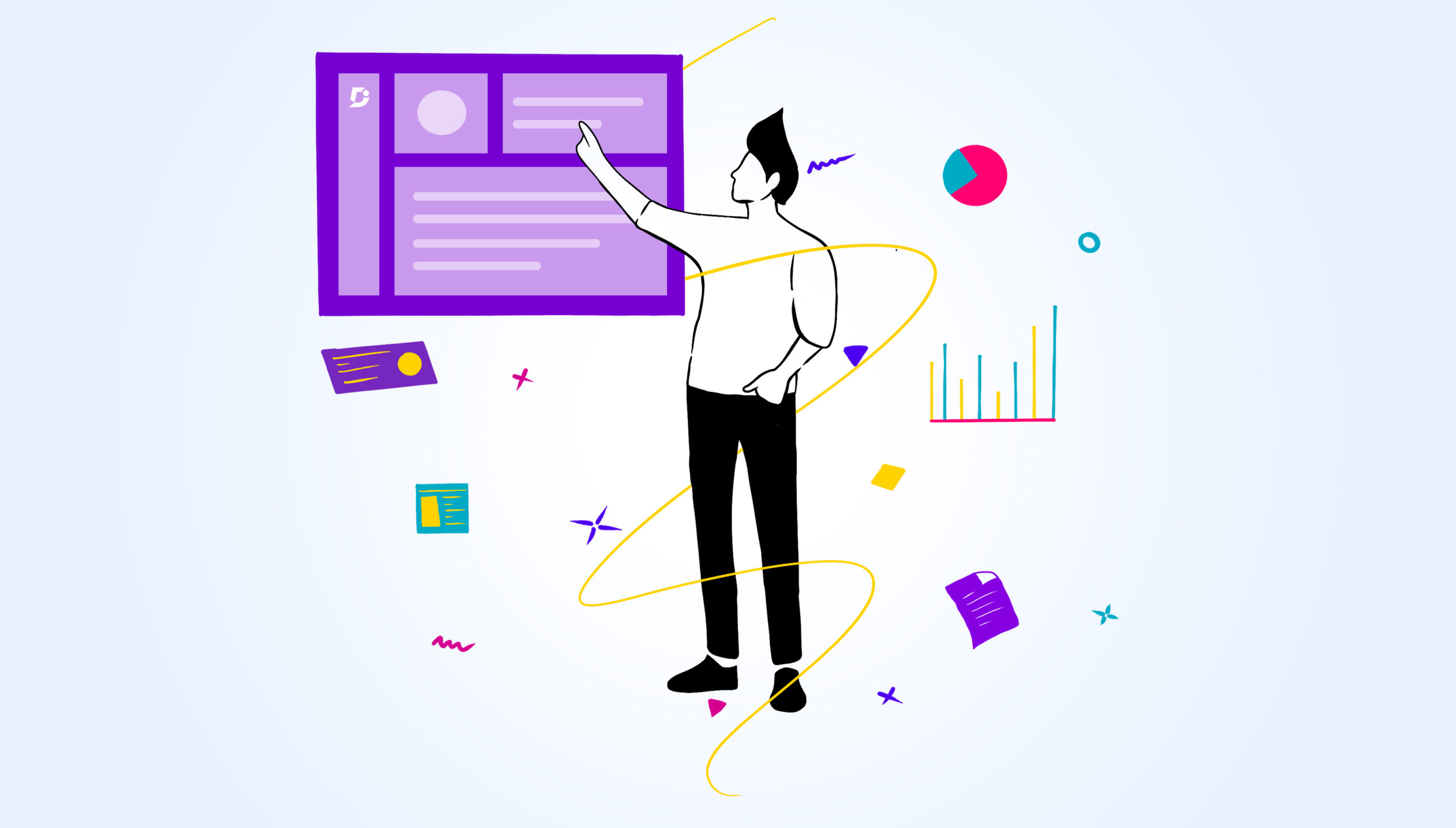The probability of converting existing customers is as high as 70%. On the contrary, the chances of reeling in a new client are as low as 5%. Both of these statistics suggest that SaaS companies should ensure they’re delighting their current customers. Yet, only 23% of B2B companies have a customer-centric approach.
Ensuring that your customers are using your products to get positive results is extremely important. Some experts believe that by the year 2020, customer experience will be more important than the price of your products. In other words, making sure your clients are successful will ultimately have a positive impact on your company.
That said, learning how to measure the success of your customer is not always easy. This article will briefly define customer success and mention some of its benefits. We’ll then discuss ways to measure customer success and help you track how your product is being used.
Contents:
What is Customer Success?
The Importance of Measuring SaaS Customer Success
How to Measure Customer Success in a SaaS Company
Start Measuring the Success of Your SaaS Company Today!
What is Customer Success?
SaaS customer success can be defined in many ways. In essence, it’s a culture or philosophy that revolves around your customers and ensuring they are getting the most out of your product. Through customer success, you guarantee that your clients are actually using your products and see the benefits they offer.
This means appointing a team that is responsible for the success of your customers as well as managing communications with them. Your SaaS customer success team needs to make sure that your clients take advantage of your product and provide support if this is not the case.
Sign up for your 14-day free trial with Document360 now
Get Started
The Importance of Measuring SaaS Customer Success
74% of customers that receive a good experience are likely to keep their subscription for at least 1 year. Ensuring that your clients use your product to get a positive outcome will entice them to keep your services. This can translate to financial stability and higher revenue for your company. And, it can open up an opportunity to upsell add-ons and additional products as well.
How to Measure Customer Success in a SaaS Company
50% of the companies that have a customer success team view it as a separate department. But, measuring customer success is not always straightforward. The metrics that define customer success can vary from one SaaS provider to the next.
With this in mind, there is a set of SaaS customer success metrics that may help paint a better picture regardless of your industry.
Learning how to identify and measure these can help optimise your success department. At the same time, it will also improve the chances of delivering great customer support and creating a positive experience for your clients.
Churn Rate
The churn rate can be defined as the percentage of clients that cancel their service each month. And, needless to say, high cancellation rates should raise a red flag.
There are many reasons that may cause high churn rates. You should have the retention team survey customer as to why they are canceling their service. Then, look at the feedback you receive and implement changes to entice your clients to stay.
One of the best ways to delight your customers is by delivering fast and accurate information. After all, 66% of people believe that companies can provide a great online experience by simply valuing their time. And, deploying a knowledge base can help you do so from several points of view.
For instance, opting for a platform like Document360 allows you to create knowledge bases for internal and external purposes. In simple terms, a knowledge base is a repository of company resources that contain information about your product. Knowledge bases can include details related to your SaaS features and should serve as the first point of call for any product-related questions.
By setting up an internal knowledge base, your team will be able to access information in an efficient manner. This can also improve internal communications and reduce hold time across the board. External-facing knowledge bases provide a self-serve option for your customers. They’ll be able to access information on their own time. Plus, your clients won’t have to queue to get the information they need, which will show them that you value their time.
Sessions per Day
As the name suggests, sessions per day are the number of times your clients access your platform daily. It gives you a raw representation of how much your product is being used.
That said, remember that this may vary according to your platform. Some types of software are designed for daily use. CRMs and sales platforms are great examples. Other SaaS products are used more sporadically. Tools like simple accounting software fall into this category.
If the sessions per day are particularly low for a client, it may be a great chance for your success team to touch base and offer assistance.
Sign up for your 14-day free trial with Document360 now
Get Started



Monthly Onboarding Rate
Most companies already track their sales every month. By starting to measure the monthly onboarding rate, you’ll know what clients have actually adopted your product.
Onboarding is the process of familiarising your clients with your platform and its features. But, instead of having a quick call, you should create a trackable onboarding process. It should have measurable milestones that tell you the extent to which your product is being used.
Keep in mind that the onboarding process shouldn’t be handled by your SaaS customer support team. In contrast, your success agents should reach out proactively. They should teach your customers all the ins-and-outs to make sure they see the value of your product.
Monthly Active Users
By the time you finish onboarding a customer, and depending on your product, you may know how many employees they have. You can measure the growth rate of each client by tracking the number of monthly active users on their account.
This will give you a clear idea of how good your customers are doing. If the number of monthly active users goes up, you can assume their company is growing. If you notice the number is going down, it may be time to step in and provide solutions for your client.
You can also take the chance to upsell your customers or teach them how to use the features that may help them out.
Account Expansion and Contraction
The expansion and contraction metrics measure the additional services that were added or removed from an account. Account expansion means that the customer is adding more paid features. And, as you can imagine, contraction means that the additional features are being cancelled.
Your success agents should check in with your clients whenever they notice a contraction. By showing them how to use the features properly, your agents may be able to turn a contraction into an expansion opportunity.
Additionally, you can use a knowledge base to help collect information directly from your customers. Have your team create a variety of articles that cover the additional features you offer. At the bottom of each post, you can add a question saying “was this article helpful?”.
Include two simple thumbs up and thumbs down buttons to collect feedback from the client. You can also place an optional text box where your customers can elaborate if they want to.
Net Promoter Score
The net promoter score (NPS) shows the percentage of customers that would recommend your service. You can calculate this number by running a survey on your current clients. The folks who would not recommend your service are detractors. Promoters, on the other hand, are the clients who would recommend your service.
By subtracting the detractors from the promoters, you will get your NPS. If you notice that you have a low NPS, you should start by implementing SaaS customer support best practices or using referrer schemes. And, you should also reach out to detractors and figure out why they have a negative perception.
Referrals
Referrals are the number of new clients you get from recommendations. Many companies already measure the number of referrals they receive. But, not many realise that it’s a great way to measure the success of your customers.
Keep in mind that referrals are closely linked to NPS. The more successful your customers are, the higher the chances of getting a referral off them. If you don’t have any referrals, you should have your success agents check with your customers.
You can start off by asking NPS-related questions. If you get a positive response, you can encourage your customers to tell their peers and partners about your platform.
In some cases, you may even offer incentives to your clients. But, you don’t want these to be the only reason for the referral!
Sign up for your 14-day free trial with Document360 now
Get Started



Free Trial to Paying Customer Conversions
Similarly to sales, most SaaS companies already track the number of free trials they acquire every month. Unfortunately, this doesn’t necessarily tell you how many of these clients find value in your product.
Measuring the percentage of prospects that go from a free trial to a paying account each month is a great way to track customer success. The vast majority of startups and mid-size SaaS companies try to cut costs wherever possible. So, if these businesses are willing to invest in using your platform, they definitely believe it can lead them to success.
Make sure you pay special attention to these customers. If you play your cards right, they will also help you improve your NPS. And, you can even get referrals and valuable feedback from them as well.
Customer Health Score
Last, but certainly not least, comes the customer health score or CHS. This metric works as a holistic representation of your customer’s success. But, keep in mind that there is no set standard for measuring customer health score.
CHS is a collection of relevant statistics that give a wholesome idea of how well your customers are doing. It can also tell you how much they use your platform. But, because all companies are different, each enterprise needs to create its own set of metrics that make up the CHS.
In most companies, the customer health score includes both usage and satisfaction statistics. Not to mention the fact that some businesses even have multiple CHS models for different purposes. Some can use it to predict churn, while others to identify upselling opportunities.
Start Measuring the Success of Your SaaS Company Today!
Although customer success is a new concept, it’s quickly proving to be an effective way to benefit your company and your clients.
By focusing on the success of your customers, you can grow your business along with your clients’ ventures. You’ll also be able to increase revenue while improving the perception that your clients have of your company. This, in turn, may allow you to create a better product and yield happy customers.
The metrics above should help you measure the success of your customers. Statistics like churn can help you identify the need for additional tools. And, by implementing knowledge bases and other features, you can pave the way for your customer’s success.





